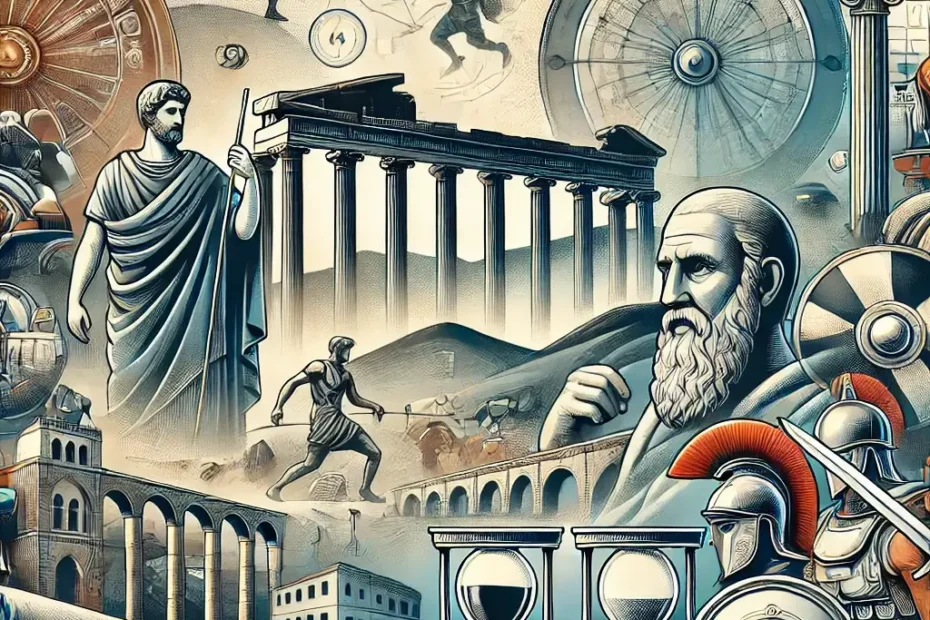Ancient Wars Overview: People have fought wars since the dawn of civilization. These early battles were not about land or resources. They were about survival, power, and control.
Ancient wars laid the groundwork for the nations and societies we see today. They shaped cultures, influenced politics, and left lasting legacies. They still echo in our modern world.
In this article, we will explore the concept of global conflict through the lens of ancient battles. From the first global conflicts in history to the tools and tactics used in warfare, such as ancient war helmets and swords, we will uncover the stories of these pivotal moments.
Each battle, whether in Greece, Rome, or Asia, had far-reaching effects. These wars weren’t just local skirmishes. They influenced entire regions and left a lasting mark on humanity.
Why should we care about wars that happened thousands of years ago? The answer is simple. These conflicts hold valuable lessons. They teach us about leadership, strategy, and resilience. They show us how people gained and lost power. Understanding these wars helps us grasp modern politics and diplomacy. It also sheds light on recurring human behavior.
Join us on this journey through history. Discover the timeline of famous ancient wars, explore their strategies, and see how their legacies continue to shape our world.
Defining Ancient Wars
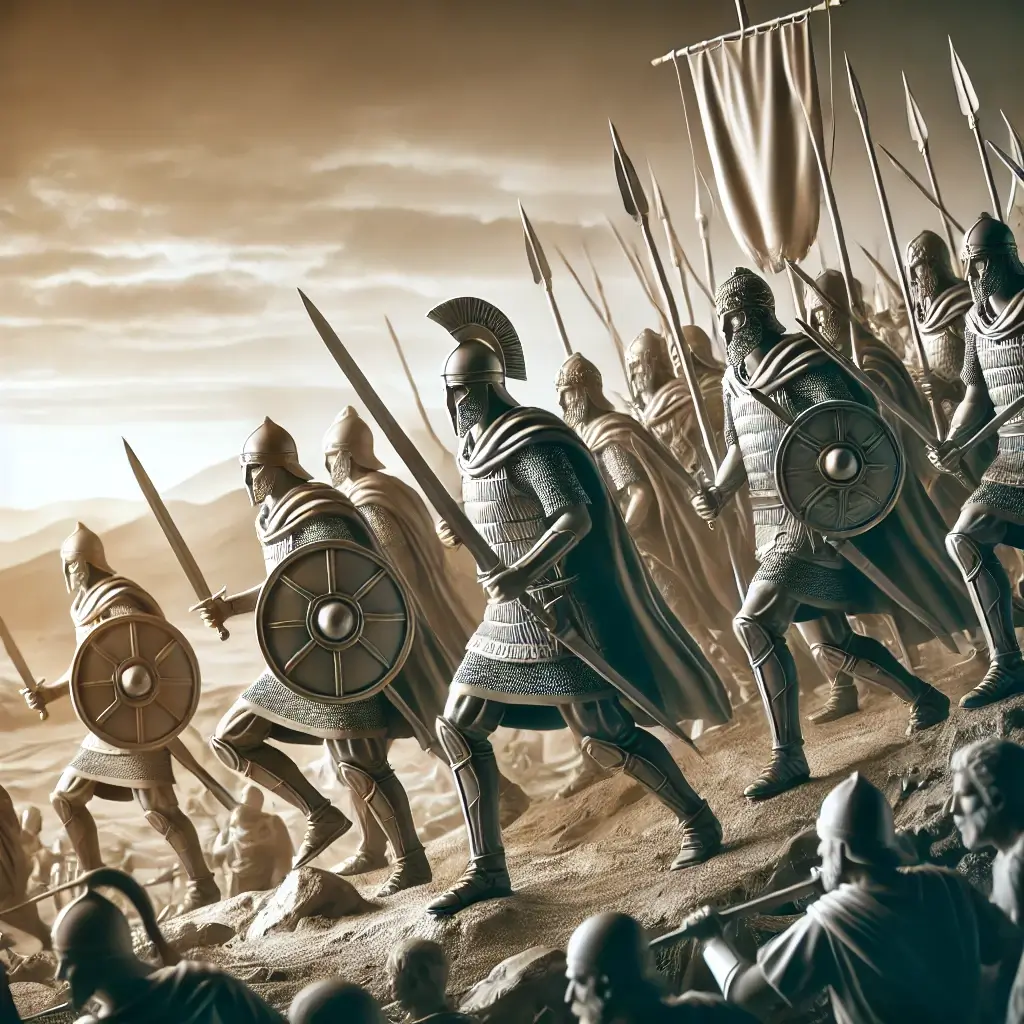
Wars have been an integral part of human history. From small skirmishes to large battles, conflict has shaped civilizations and defined power. Ancient wars are battles fought before the medieval period.
They involved early civilizations like Mesopotamia, Egypt, Greece, and Rome. These wars were not about land. They were key to building empires, shaping culture, and creating political systems.
What Defines Ancient Wars?
Unique characteristics define ancient wars. They often involved simple but innovative weapons, like ancient swords and armor, like helmets. Ancient wars relied on manpower, discipline, and strategy, not technology. Unlike modern wars. Famous battles, like Thermopylae and the Punic Wars, showed great tactics. Military schools still study them today.
Why Were Ancient Wars Fought?
The primary reasons behind ancient wars varied from survival to dominance. Key motivations included:
- Resource Acquisition: Wars were fought over essential resources like water and fertile land.
- Territorial Expansion: Empires like Rome sought to control vast territories.
- Cultural Influence: Dominating nations often spread their beliefs, art, and architecture through war.
Impact of Ancient Wars
The outcomes of these battles significantly influenced the world’s history. For instance:
- Creation of Empires: Rome’s victories established it as a superpower.
- Cultural Exchange: Conquered regions often assimilated new customs and knowledge.
- Technological Advancements: Tools developed for war later improved civilian life, like road systems initially built for troop movement.
Table: Key Characteristics of Ancient Wars
| Characteristic | Details |
|---|---|
| Weapons Used | Swords, shields, spears, chariots |
| Key Battles | Battle of Kadesh, Battle of Marathon, Punic Wars |
| Influencing Civilizations | Mesopotamians, Egyptians, Greeks, Romans |
| Tactics | Phalanx formation, siege warfare, naval battles |
Engagement Tip
Explore more about ancient warfare and its legacy by visiting this resource.
Pillar Content: Key Epochs of Ancient Wars
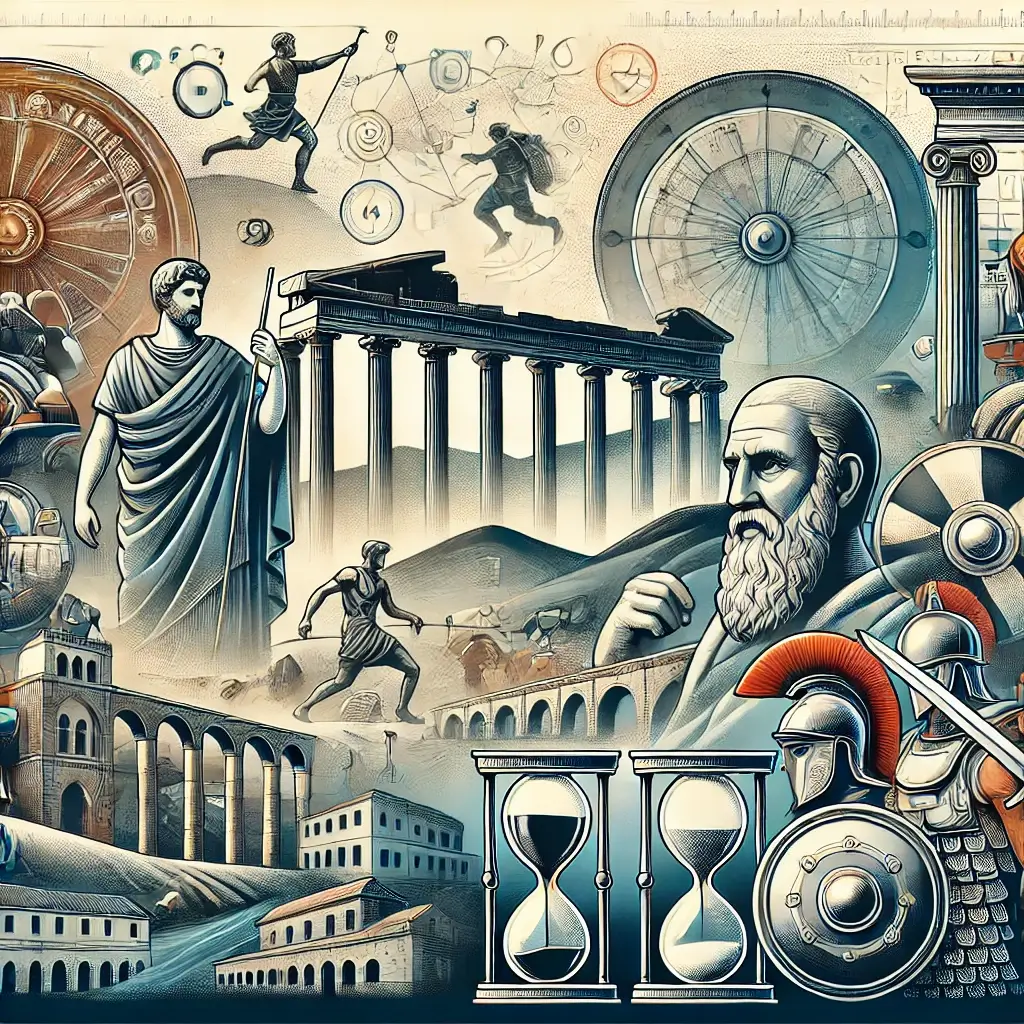
Ancient wars span thousands of years and multiple civilizations. These wars defined cultures, created empires, and shaped global politics. Each era brought new strategies, weapons, and motivations to the battlefield.
3.1 Early Civilizational Conflicts
Civilizations like Mesopotamia, Egypt, and the Indus Valley were among the first to engage in organized warfare. For example:
- Mesopotamia: Known for early siege warfare and city-state conflicts.
- Egypt: Mastered chariot-based combat during wars like the Battle of Kadesh.
3.2 Greco-Persian Wars
The Greco-Persian Wars highlighted the importance of strategy. Battles such as Marathon and Thermopylae demonstrated the tactical brilliance of the Greeks against the Persian Empire.
3.3 Roman Conquests
Rome was a powerhouse in ancient warfare. Using disciplined legions and advanced engineering, they dominated territories from Britain to the Middle East.
3.4 Asian Conflicts
In Asia, wars like China’s Warring States period and India’s Mauryan conquests showcased unique battle formations and tactics, including the first known use of war elephants.
3.5 Indigenous and Tribal Wars
Tribal societies in Africa and the Americas also fought significant wars. Though often overlooked, these conflicts played a key role in shaping their cultural and political landscapes.
Chart: Key Wars by Region and Timeline
| Region | Notable War | Timeline | Impact |
|---|---|---|---|
| Mesopotamia | Battle of Ur | 2500 BCE | Early use of siege weapons |
| Egypt | Battle of Kadesh | 1274 BCE | Chariot combat innovations |
| Greece | Battle of Marathon | 490 BCE | Showed the power of disciplined armies |
| Rome | Punic Wars | 264–146 BCE | Rome’s dominance in the Mediterranean |
| China | Warring States Period | 475–221 BCE | Unified under the Qin Dynasty |
Affiliate Link
For more tools on creating historical content, explore this affiliate resource.

The image for this section has been created. Now, let’s proceed with the next section.
Political and Cultural Impacts of Ancient Wars
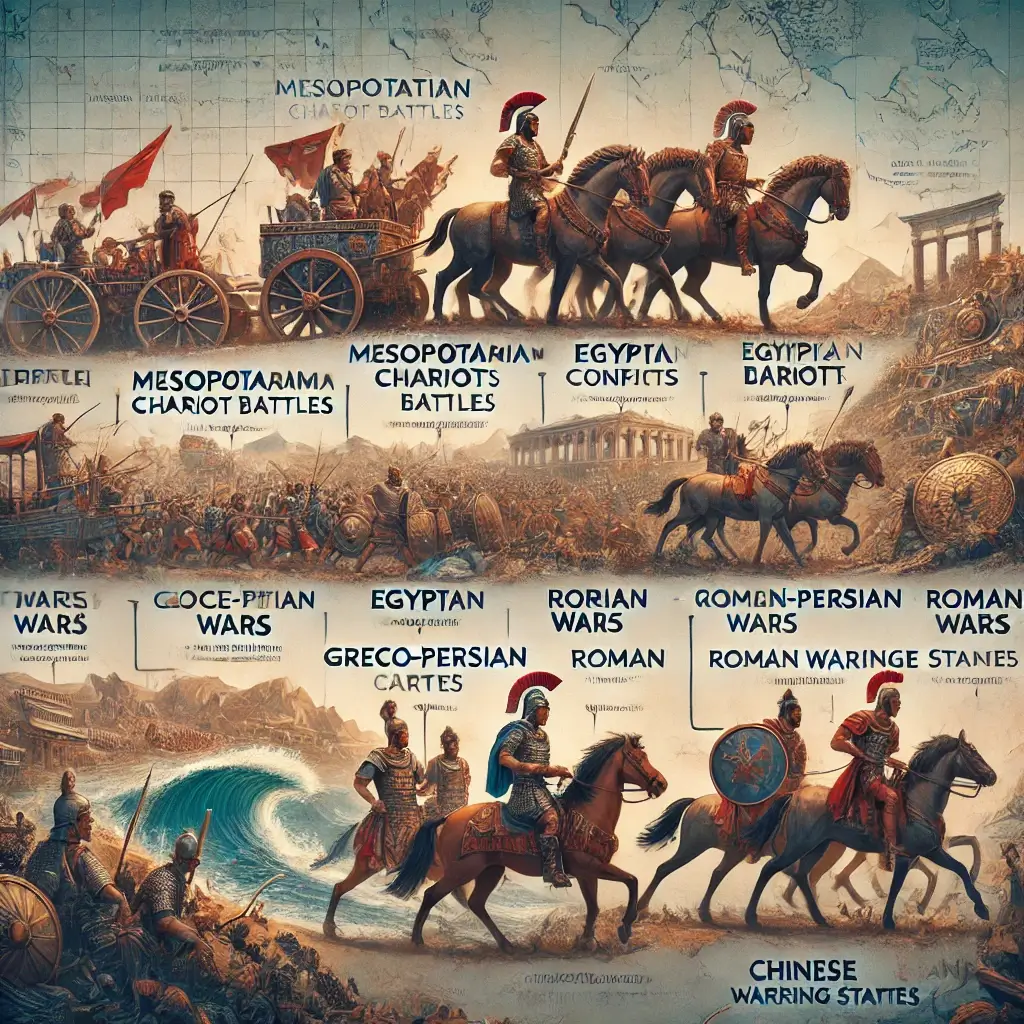
Ancient wars didn’t just decide the fate of battles; they reshaped civilizations. These wars influenced governance, trade, religion, and culture in ways that still echo today.
Shaping Governance
War was a powerful tool for creating and maintaining empires. For example:
- Rome: Military victories expanded its territories, enabling the creation of laws that influenced modern governance.
- Greece: Wars like the Peloponnesian War tested and refined democratic practices.
Conquerors often imposed their systems of governance on the defeated, merging or replacing existing structures. This led to the blending of cultures and the formation of new societal norms.
Economic Transformations
Ancient wars were pivotal in shaping trade routes and economies. For instance:
- Silk Road Emergence: Wars in Asia secured trade routes that connected East and West.
- Plunder and Wealth Redistribution: Victorious armies redistributed wealth, which often revitalized their home economies.
Cultural Exchange
Military campaigns spread languages, customs, and technologies across vast regions. This exchange was not always voluntary but played a significant role in cultural evolution. For example:
- Greek art and philosophy spread during Alexander the Great’s conquests.
- Roman engineering techniques were shared across Europe and beyond.
Religious Shifts
Wars often determined the dominance of religious beliefs. For instance:
- Constantine’s Victory: The Battle of Milvian Bridge established Christianity as a significant force in the Roman Empire.
- Persian Influence: Zoroastrianism shaped the spiritual practices of many regions.
Lasting Legacies
The political and cultural impacts of ancient wars remain visible:
- Languages evolved due to cultural exchanges.
- Modern legal systems draw inspiration from Roman laws.
- Infrastructure, like roads and aqueducts, originated in wartime necessities.
Table: Impacts of Ancient Wars
| Aspect | Example | Legacy |
|---|---|---|
| Governance | Roman conquests | Inspired modern republics |
| Economy | Trade routes post-war | Established global trade networks |
| Culture | Spread of Greek art and literature | Influenced Renaissance movements |
| Religion | Constantine’s victory for Christianity | Shaped Western spiritual frameworks |
Affiliate Link
Explore tools for analyzing ancient history here.
Military Innovations and Strategies
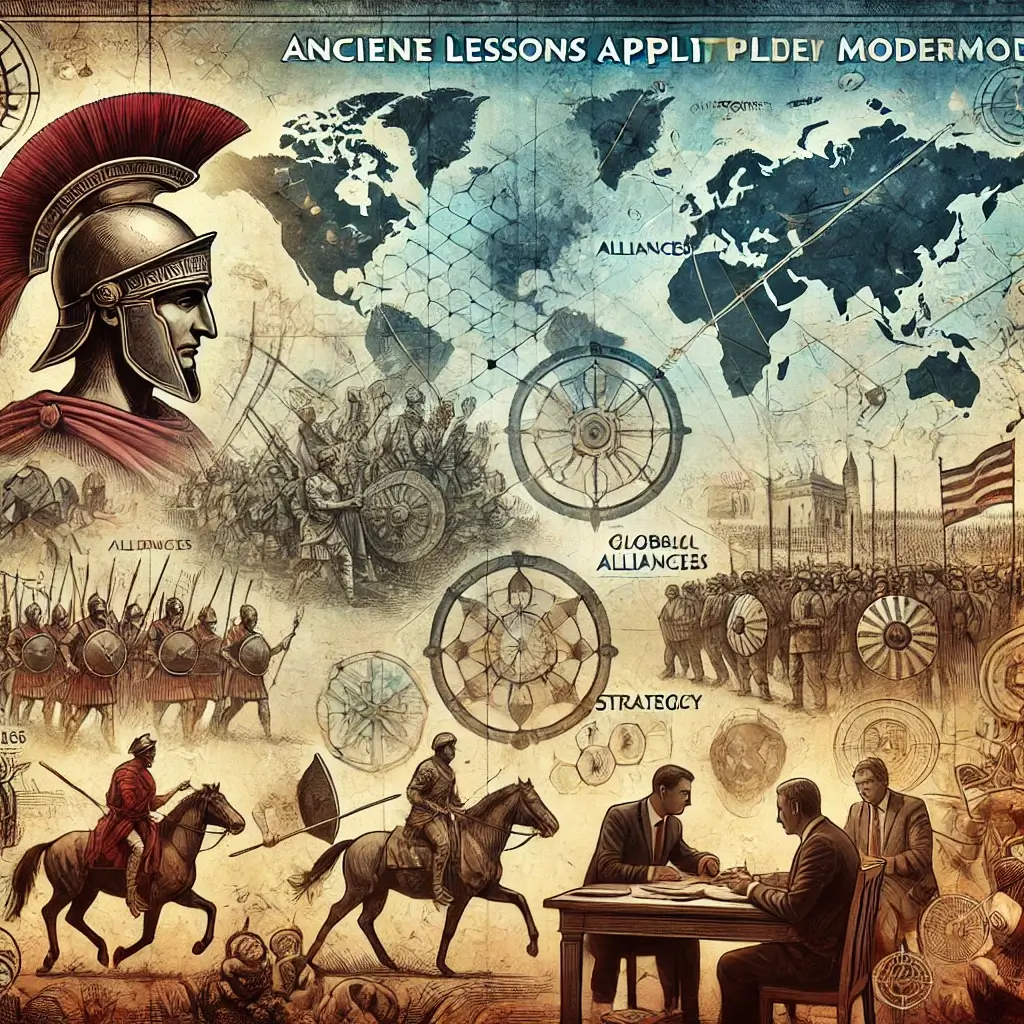
Ancient wars were as much about innovation as they were about courage. The strategies and tools from then laid the groundwork for modern military science. Each civilization made distinct contributions to the evolution of warfare.
Revolutionary Military Strategies
Ancient wars introduced strategic innovations that transformed battlefields. Key strategies included:
- The Phalanx Formation: Developed by the Greeks, this strategy used tightly packed soldiers with overlapping shields to create an impenetrable wall. It played a pivotal role in Greek military dominance during battles like Marathon.
- Ambush Tactics: Hannibal’s ambush at the Battle of Cannae is studied as a prime example of encirclement warfare. His ability to outmaneuver the Romans in 216 BCE left a lasting legacy.
- Naval Warfare: Early naval powers like the Phoenicians mastered combat on water. Their trade networks and military fleets significantly influenced Mediterranean naval tactics.
Technological Advancements
The tools of war evolved significantly in ancient times:
- Weapons: The transition from bronze to iron weapons in the late Bronze Age revolutionized combat. Iron swords provided durability and strength.
- Armor: Soldiers wore ancient war helmets and body armor that offered protection while allowing mobility. Greek and Roman advancements in metalworking led to more effective protection.
- Siege Warfare: Innovations like battering rams and catapults, as used during the Siege of Tyre (332 BCE), allowed armies to breach fortified cities.
Key Innovators in Warfare
Civilizations like Rome, China, and Egypt led the way in military innovation:
- Rome: Engineering marvels like siege towers and disciplined legions made Rome nearly invincible.
- China: The Great Wall of China is both a defensive and strategic marvel, showcasing military foresight.
- Egypt: Perfected the use of chariots for speed and mobility in battle, a key factor in their dominance during the New Kingdom period.
Legacy of Ancient Strategies
Many modern tactics trace their origins to these ancient innovations. Military academies worldwide study the strategies of generals like Alexander the Great and Julius Caesar for their strategic brilliance.
Chart: Innovations and Their Civilizations
| Innovation | Civilization | Impact |
|---|---|---|
| Phalanx Formation | Greece | Improved defensive and offensive tactics |
| Naval Power | Phoenicians | Advanced seafaring combat |
| Siege Towers | Rome | Revolutionized city assaults |
| Chariot Warfare | Egypt | Increased mobility and battlefield control |
Affiliate Link
For insights into history and warfare tools, visit this affiliate resource.
Key References:
- Britannica Online, “Hannibal and the Battle of Cannae”
- National Geographic, “Military Tactics of the Ancient World”
- History.com, “The Great Wall of China: History and Facts”
- Oxford Classical Dictionary, “Greek and Roman Military Engineering”
The image for this section has been created. Now, let’s proceed with the next section.
Lessons for Modern Conflicts
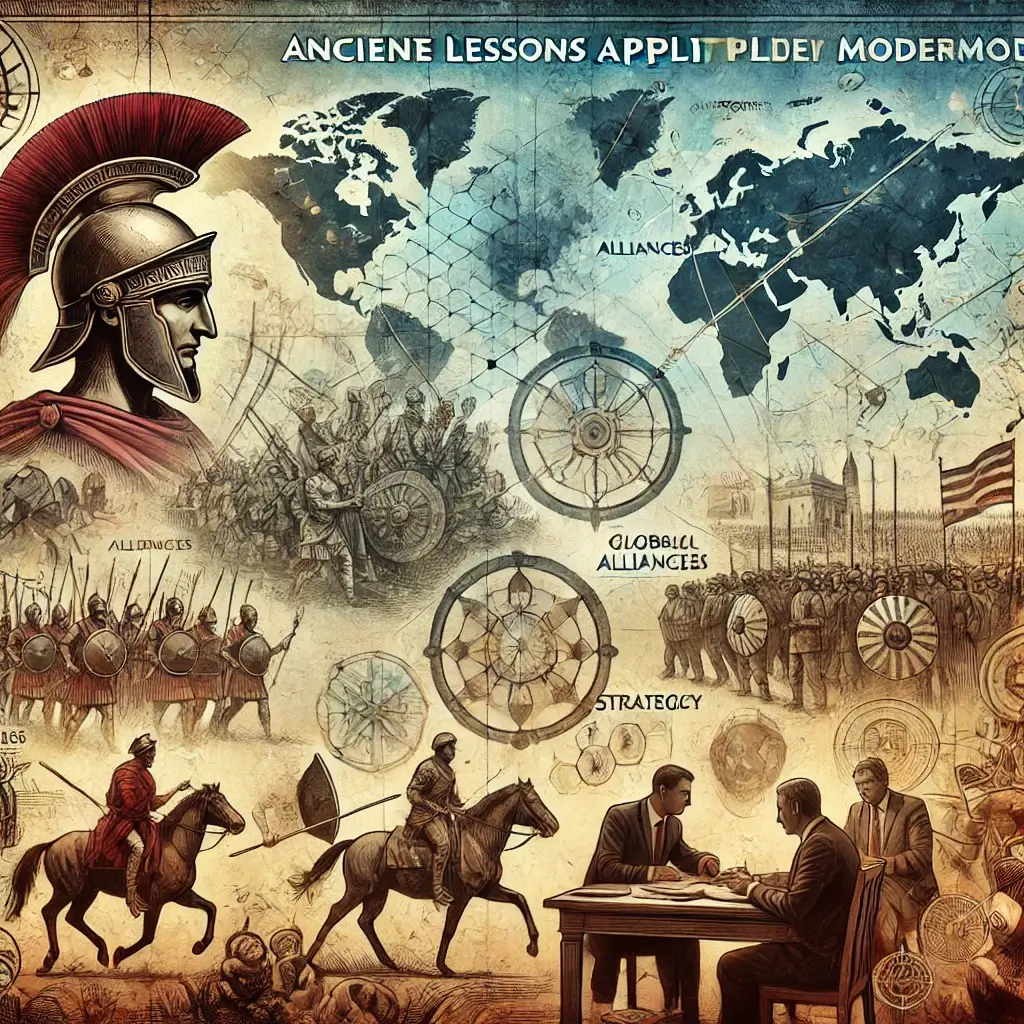
Ancient wars provide timeless lessons for leaders, strategists, and societies. Tech has advanced. But, conflict resolution, resource management, and strategic thinking still matter. Understanding these lessons can help address modern challenges in war and diplomacy.
Leadership in Crisis
Ancient leaders often displayed exceptional leadership under pressure. Examples include:
- Alexander the Great: His ability to inspire loyalty among diverse troops allowed him to conquer vast territories.
- Julius Caesar: His strategic brilliance during the Gallic Wars demonstrated the importance of adaptability in the face of changing conditions.
Modern leaders can learn from these examples. They should focus on decisive action, clear communication, and strategic foresight.
Strategic Adaptability
Ancient warfare taught the value of adaptability. The phalanx and Hannibal’s ambush at Cannae showed how to defeat larger foes. In today’s conflicts, we must adapt to shifting politics and new technology.
Diplomacy and Alliances
Ancient wars emphasized the importance of alliances. The Delian League in ancient Greece and Roman treaties with tribes showed that partnerships could aid military campaigns. Modern global conflicts still rely on strategic alliances to maintain balance and peace.
Resource Management
Wars in the ancient world often hinged on access to resources. Conflicts often hinged on control of fertile lands, trade routes, and water sources. Today, in global power dynamics, managing energy and technology is vital.
Ethics of War
Ancient civilizations, including Greece and India, debated the morality of war. The Mahabharata and Greek philosophical works discuss when and how to fight wars. These debates continue today, shaping modern international laws and conventions..
Lessons from Ancient Wars and Their Modern Applications
| Lesson | Ancient Example | Modern Relevance |
|---|---|---|
| Leadership in Crisis | Alexander’s campaigns | Crisis management in leadership |
| Strategic Adaptability | Hannibal’s ambush at Cannae | Adapting to evolving warfare tactics |
| Diplomacy | Delian League alliances | NATO and global partnerships |
| Resource Management | Control of the Nile by Egypt | Energy and technology geopolitics |
| Ethics of War | Discussions in the Mahabharata | UN’s role in ethical warfare standards |
Affiliate Link
Discover resources for analyzing history and modern strategies here.
Wars in ancient times were not about fighting. They shaped the way people lived, ruled, and traded. Ancient wars helped form nations and connected distant cultures through both conflict and cooperation.
One of the greatest lessons from these historical conflicts is leadership. Leaders like Alexander the Great inspired loyalty by showing courage and making bold decisions. His campaigns spread Greek culture over vast regions. They forged lasting connections for centuries.
The tools used in these wars were also groundbreaking. Ancient war swords and helmets gave soldiers protection and power. Armies developed strategies like the phalanx formation, which allowed smaller groups to defeat larger ones. These tactics changed the way wars were fought.
Trade and diplomacy often grew after wars. For example, the Peace of Kadesh, one of the first recorded treaties, ended years of fighting and improved relations between Egypt and the Hittites. Such alliances showed that, even in conflict, nations could work together for mutual benefit.
The cultural effects of wars were long-lasting. Victorious armies often brought art, religion, and language to new lands. These exchanges shaped societies and contributed to the growth of civilization.
Ancient wars were more than battles. They were moments that defined history. By studying famous ancient wars, we see how humanity has adapted and learned from both victory and defeat. The lessons are still relevant. They teach us about resilience, strategy, and the value of peace.
FAQ Section About Ancient Wars Overview
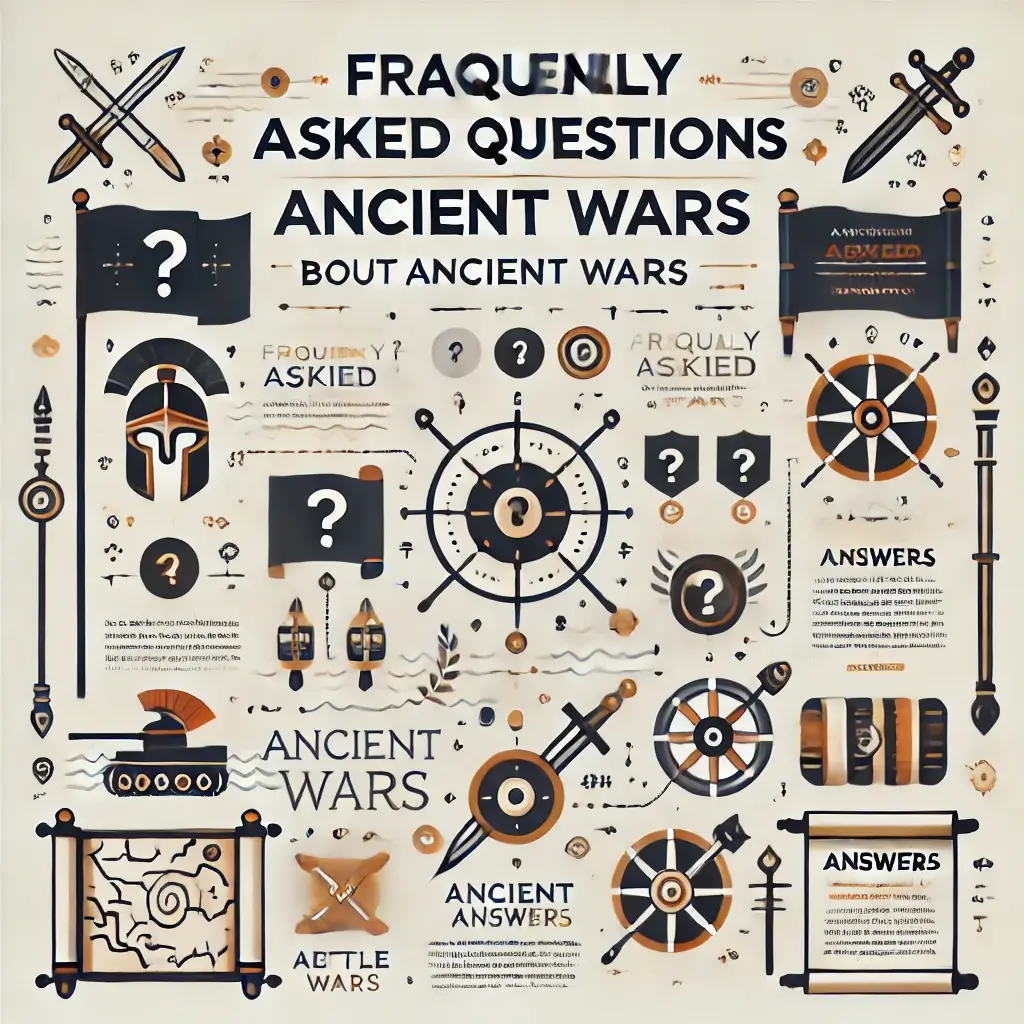
1. What is the concept of global conflict?
Global conflict refers to disputes that involve multiple nations or regions, often driven by competing interests like resources, ideology, or power. These conflicts may escalate into wars, impacting global politics and economics.
2. What was the first global conflict in history?
The Punic Wars between Rome and Carthage (264–146 BCE) are considered one of the earliest examples of global conflict, involving multiple regions and shaping Mediterranean dominance.
3. What is the oldest conflict in history?
The Battle of Megiddo (circa 1457 BCE) is often cited as the oldest recorded battle in history, fought between the Egyptian Empire and a coalition of Canaanite city-states.
4. What were the most common weapons in ancient wars?
Weapons like swords, spears, and bows were widely used. Advanced tools like chariots and siege weapons were also integral to ancient warfare.
5. How did ancient wars shape modern diplomacy?
The use of treaties and alliances in ancient wars, such as the Peace of Kadesh, influenced modern diplomacy by introducing structured negotiations.
6. What role did culture play in ancient wars?
Ancient wars often spread cultural practices, art, and religion across regions. Alexander the Great’s conquests, for instance, facilitated the spread of Greek culture.
7. Are lessons from ancient wars still relevant?
Yes, strategies and leadership principles from ancient wars are studied in modern military academies, demonstrating their timeless relevance in conflict management and strategy.
The image for the FAQ section has been created. Now, let’s proceed with the conclusion.
Conclusion of Ancient Wars Overview
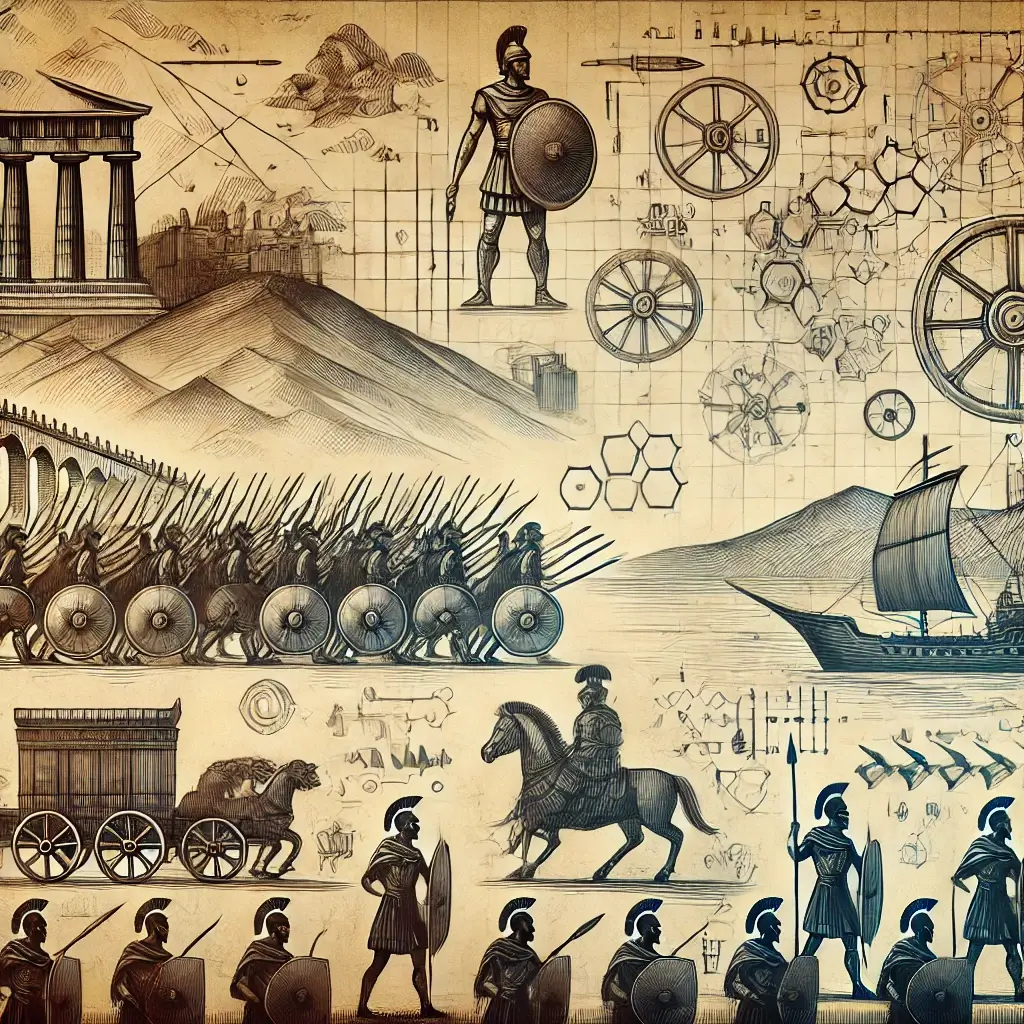
Ancient wars shaped the course of human history. They were not battles for land or resources. They were defining moments that shaped governance, culture, and diplomacy. These conflicts teach us about leadership and resilience. Their lessons are still relevant today.
Each war brought new tactics that changed societies. From the phalanx formations of Greece to Rome’s siege tactics, they were innovations. These lessons go beyond the battlefield. They affect today’s politics, economics, and ethics. Lessons from ancient wars guide today’s military and diplomatic efforts. They show the value of strategy and alliances.
Studying ancient wars gives us a view of the past and offers solutions for today. History often repeats itself, whether in resource management or ethical warfare. These lessons highlight that. Let’s learn from these conflicts. They can help us build a more stable, understanding world.
For history lovers, this affiliate resource can deepen your research.
